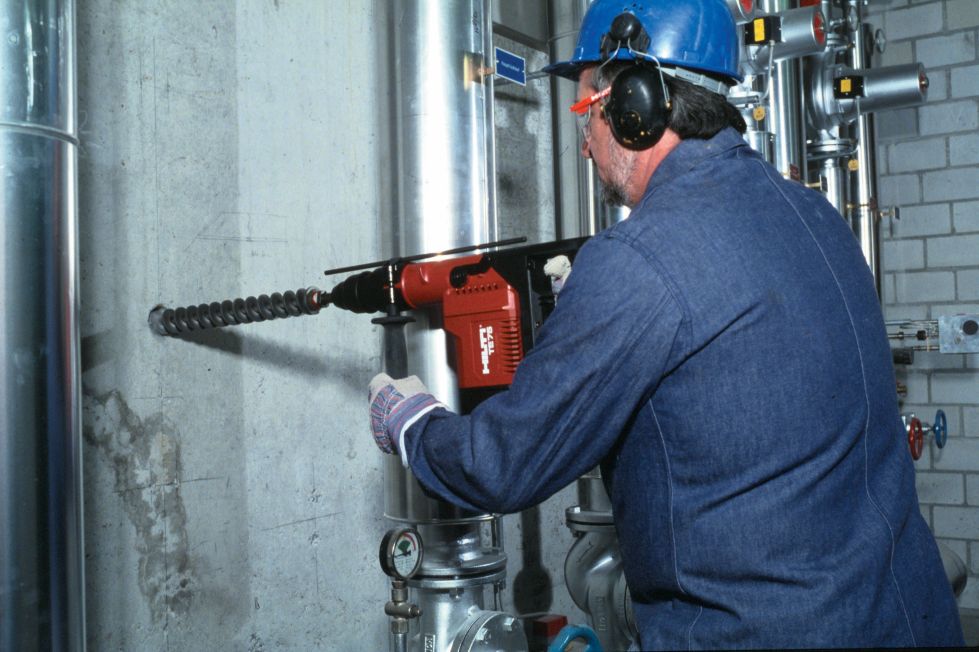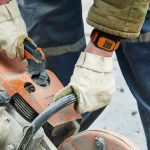 What can you do to mitigate the effect of Hand Arm Vibration Syndrome (HAVS)? Speedy Hire has some answers.
What can you do to mitigate the effect of Hand Arm Vibration Syndrome (HAVS)? Speedy Hire has some answers.
In 1911, Professor Giovanni Loriga, a doctor specialising in occupational health, noticed something: workers who repeatedly used pneumatic hammers ended up with damaged hands. Showing true dedication to his research, he even used these hammers himself repeatedly, and noticed that he ended up with the same symptoms. Clearly, there was some sort of causal link between hammer use and hand damage.
The true nature of this link was not firmly established until 1918, when Alice Hamilton MD – who would later become the first woman to be appointed to the faculty at Harvard Medical School – carried out a study of the symptoms experienced by quarry cutters and carvers in Bedford, Indiana. There, she noticed that: “Among men who use the air hammer for cutting stone there appears very commonly a disturbance in the circulation of the hands which consists of spasmodic contraction of the blood vessels of certain fingers, making them blanched, shrunken, and numb.” She rightly identified that it was the vibrations that were the culprit in this new condition she had observed – which she christened ‘dead fingers syndrome’. She also noticed that cold weather and continuous use of the air hammer led to an increase in symptoms and wrote that “if these features can be eliminated, the trouble can be decidedly lessened.”
Despite the fact that the risks were identified at the close of the First World War, the first scale for assessing the condition we now call Hand Arm Vibration Syndrome (HAVS), the Taylor-Pelmear scale, was not developed until 1975. And in the UK, it was not listed as a prescribed disease until 1985.
The symptoms of HAVS, and its close relations Vibration White Finger, Carpal Tunnel Syndrome and Raynaud’s Disease, are unmistakable: tingling and numbness in the fingers, loss of strength in the hands and, in cold and wet weather, fingers going white, then red and becoming painful can all manifest as a result of the damage done to the nerves, blood vessels and the joints of the hand caused by using vibrating machinery.
Risk factors
And even what seems like a small amount of exposure is a risk if it happens on a regular basis. Using hammer action tools for just 15 minutes per day, for example, can leave workers with the condition.
For this reason, employers needs to carefully risk assess their working practices for HAVS-risk and put a plan in place in order to ensure their workers are not exposed.
It is not just the equipment used that causes HAVS, however. The interaction of other factors also plays a part. For example, whether a tight or loose grip is used, the temperature and the rest times in between exposure can all increase or decrease risks. More personal factors, such as whether the worker’s circulation is compromised by factors such as smoking also play a part.

Mitigating the risk
The good news, however, is that the risks are easily mitigated by taking the following steps:
- Eliminate vibration risk where possible: No level of vibration is truly safe, so choosing non-vibrating kit is always best. Ask yourself ‘do we really need to use vibrating equipment?’ Prevention is almost always better than cure and often the job can be completed without recourse to machinery that carries HAVS risk.
- Select equipment wisely: Where vibrating tools must be used, careful selection of equipment can help mitigate risk. And counterintuitively, this sometimes means selecting a machine with a higher vibration level that can then be used for a shorter period of time.
- Keep equipment in good condition: Equipment that is in bad condition is inefficient. This means it will often need to be used for longer and/or be gripped more tightly, increasing the vibration risk.
- Carry out thorough training: This can help workers develop the right technique for working with vibrating machinery. Even slight tweaks to technique, such as using a light but firm grip, rather than a tight hold, can make a difference. It should also incorporate simple steps that workers can take to protect themselves such as monitoring the temperature of where they are working and exercising fingers during work breaks in order to encourage good circulation.
- Monitor: Employers and duty holders can monitor their workers’ exposure to HAVS using various new kit on the market, such as the HAVS wrist watch which not only displays HAVS exposure in real time and notifies the user when thresholds have been exceeded, but also syncs with the Reactec Analytics Platform, which enables employers to produce cloud-based reporting on HAVS management in their organisation.









